“One thing is sure. Profound mystery is here… the unheard voice of the
primeval things of the hills.”
Mary Jones, Cerne Abbas: the story of a Dorsetshire village, London: Allen and Unwin, 1952
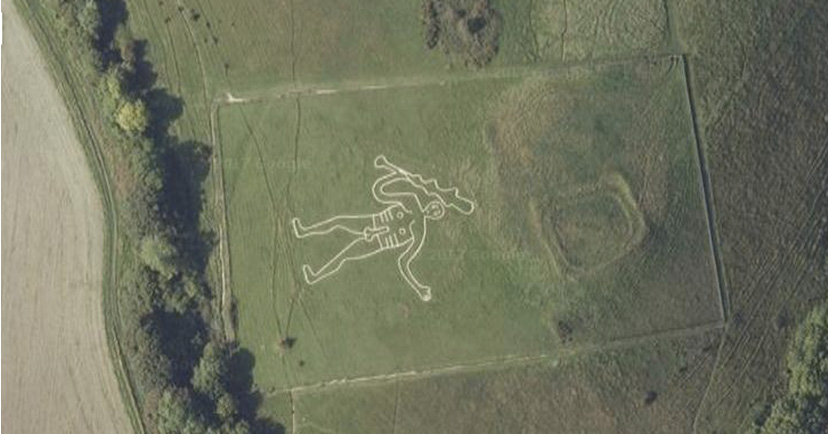
Should you ever glimpse the Cerne Abbas Giant from the air
You’d be seeing it from the point of view of a Celtic God
Whom, aeons ago, some ancient Britons tried to conjure up
By their cutting a chalk graffito into Dorset’s green sod.[1]
They must have been feeling in urgent need of a visit
From some kind of erotic superpower,
For the portrait of their God has a 36-foot penis, rising up
Through the grass and the hillside flowers.
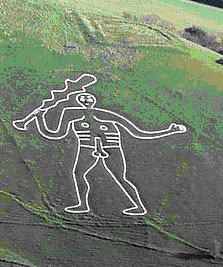
The Giant’s maintained a two thousand-year old erection,
Up and until more puritan times,
When prudish Bishops campaigned to have it neutered
And insisted it be redrawn along respectable lines.
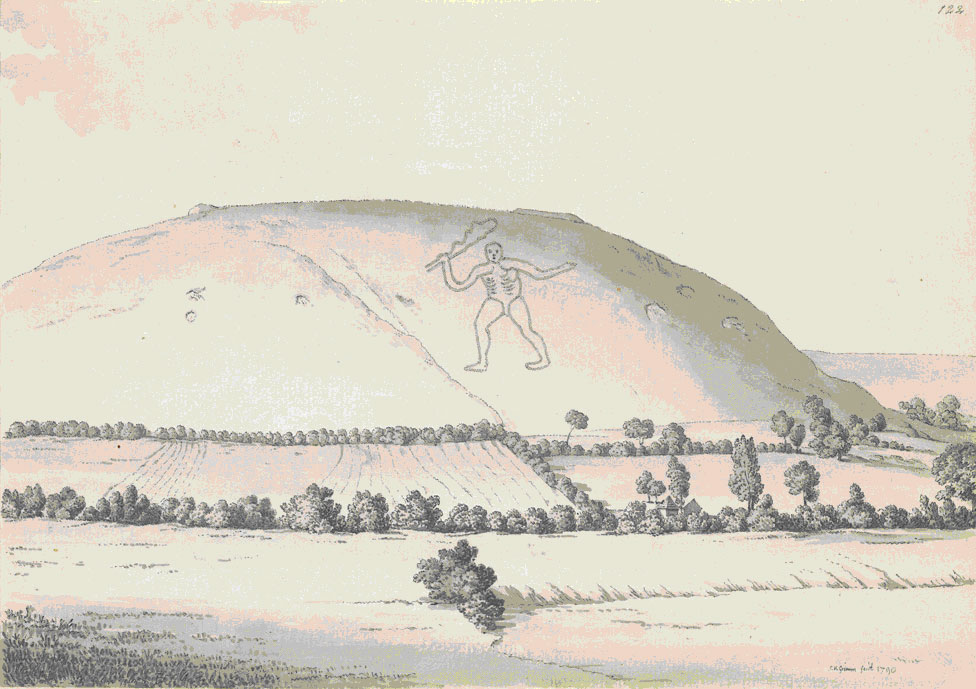
The Giant, Cerne Abbas in 1790 by Samuel Hieronymous Grimm
But the organ was resurrected and it was even planned
To plant Marilyn Monroe opposite the Giant’s Hill –
Laid out in daffodils and lifting a fluttering, golden skirt
So Dorset’s Celtic God could enjoy a worldly thrill.[2]
Although Christian authority demonized the Cerne colossus
And alleged it was luring mankind to hell,
To others it was just a Green Man, part of the Dorset landscape
Whose breast-shaped hills caused the Giant to swell.
And what’s remarkable and intriguing is that the birth rate
In this part of the world is always twice normal.[3]
The scientists insist suggestions of a pagan God’s influence
Is anecdotal – no more than an old wives’ tale,[4]
However there’s statistical evidence to show
That childless couples have reaped a reward
By their making love on a balmy summer’s night
On the Giant Celtic God’s sensual sword.[5]
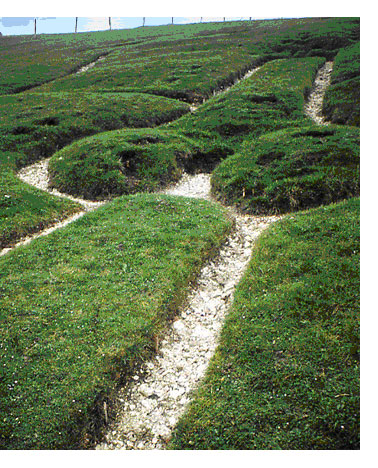
While relaxing upon the phallus of a 180-foot-tall Giant
Men and women have lost their virginity
And as they squirm and writhe naked, their ecstasy
Seems to be heightened by this Pagan divinity.

photo: Newsteam
And childless women hoping to get pregnant
Have knelt down upon the Giant’s testicles,
While a helpful white witch guides them through
A Dorchester coven’s procreation rituals.
But scientists and skeptics consider it impossible
That such a place chosen for lovers’ trysts
Could have any effect upon someone’s fertility,
And they’re sure there’s nothing they’ve missed…
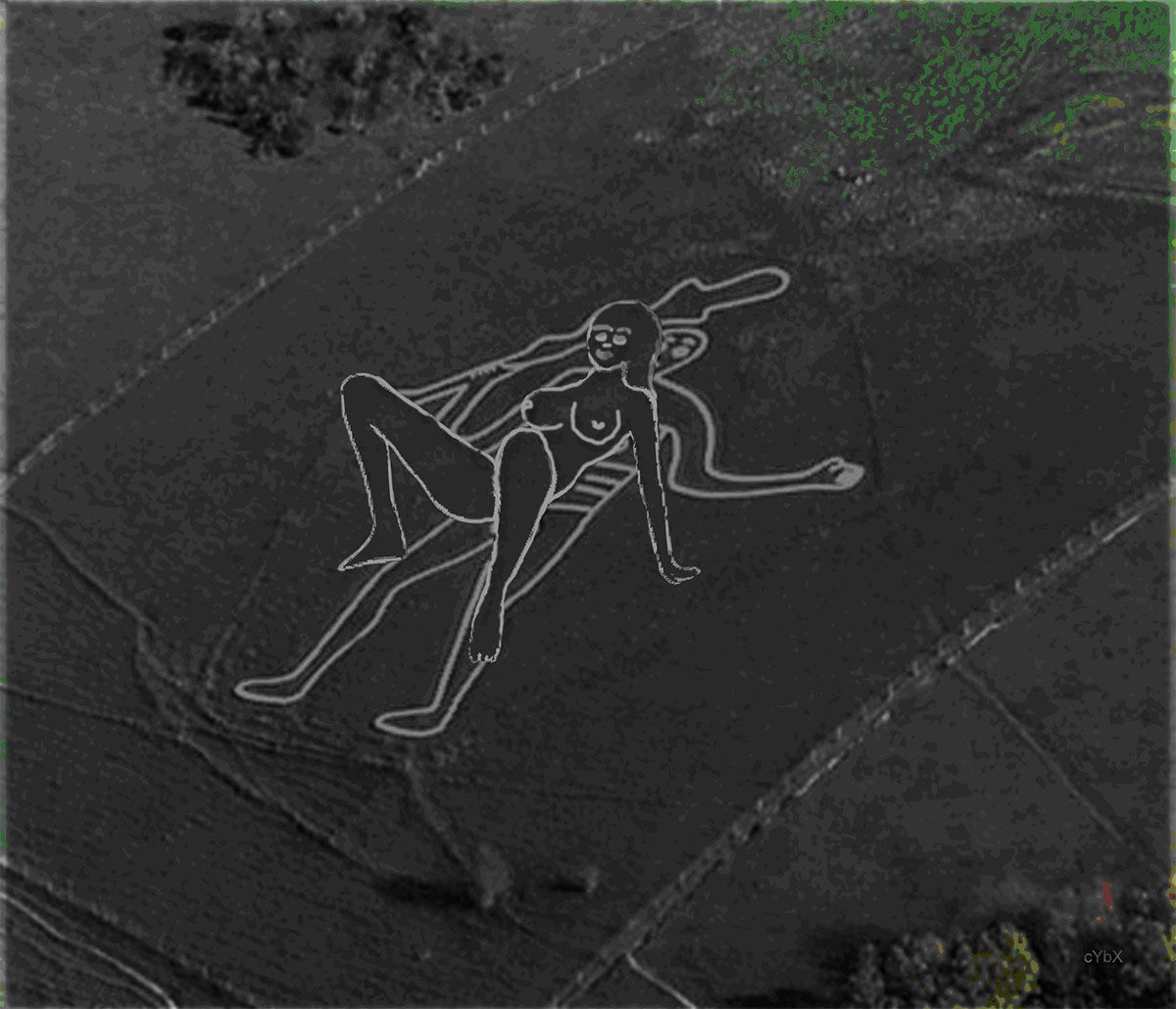
illustration: CyberBanx
Such as a gigantic, Celtic, orgone accumulator
That throbs its pagan way through gentility,
And which makes it easy to cast inhibition to the wind –
It so often being greeted by a gleeful hilarity.

illustration: Elena Caldera
Near to this seminal phallus is the site for a maypole
Whereby villagers have traditionally found a mate
And who later, in a bleary haze, realize they’ve allowed
A talismanic organ to play a part in their fate.
Cerne Abbas’ Giant’s Hill is an erotic Glastonbury
Where an earth spirit lures you on a pilgrimage
Towards its tumescent tussocks, alive with intimacy,
And delighting in arousing those from another age.
Sometimes in summer the moonlight will pick out
Yearning limbs waving wildly in the night air,
As thirty-odd couples can be seen harvesting love
And making climactic sounds in a pagan prayer.
Heathcote Williams
[1] “It is supposed to be above a thousand years standing as there is a [three figure] date between its legs […] Some think it was cut by the Ancient Britons , and that they worshipped it.” This is the first mention of the Cerne Abbas Giant. It appears in an anonymous letter to the Royal Magazine, IX, 140-1, September 1763. The Royal Magazine or Gentleman’s Monthly Companion was published from July 1754 until December 1771
[2] In 1980 Kenneth Evans-Loude, an artist from Devon proposed that he cut on the hill opposite the giant, a figure of Marilyn Monroe. Despite the fact that the landowner approved, the Arts Council refused to sponsor the project. Paul Newman, Lost Gods of Albion, 1987 pg. 76
[3] “Since Victorian times, the 180ft Cerne Abbas Giant in Dorset has been said to cure childlessness and bless women with improved fertility. Now the women in the surrounding towns and villages have the highest birth rates in the country. The latest figures from the Office of National Statistics show that the women of North Dorset have on average three children each – nearly double the national average and nearly three times as much as the city dwellers of Westminster. […] Katie Raine, a nursery manager, said the increasing number of small clients at the Archway Nursery in Pimperne – which is in sight of the Giant – were living proof of the findings. “We can take 73 children in any one day and we’re absolutely chock-a-block,” she said. “We have a baby unit for five infants, and that’s booked until next year, so there’s definitely a baby boom on.” The findings – from a survey of 10,000 North Dorset women aged between 15 and 44 – placed the district at the top of the charts, leaving the London borough of Westminster at the bottom, with just 1.16 children per woman.” Richard Alleyne, “Cerne Abbas Giant ‘inspires’ fertility boom. A giant chalk man carved into a west country hillside is living up to its legendary status as a figure of fertility by producing a baby boom in the surrounding area.” Daily Telegraph, 26 July 2010
[4] “Udal in his Dorsetshire Folklore (Hertford 1922), related that a man and woman wanting issue must actually have sexual connection on the spot to give full effect to the charm.” H.S.L. Dewar, The Giant of Cerne Abbas, West Country Folklore No 1., General Editor, Theo Brown, Guernsey, C.I.: The Toucan Press, p. 6
[5] “According to folklore, a woman who sleeps on the figure will be “blessed with fecundity”, and infertility may be cured through having sex on top of the figure, especially the phallus.” Richard Alleyne, “Cerne Abbas Giant ‘inspires’ fertility boom”, Daily Telegraph, 26 July 2010
